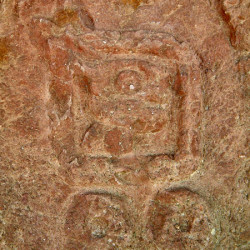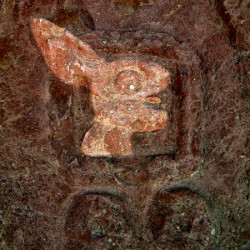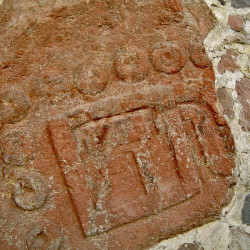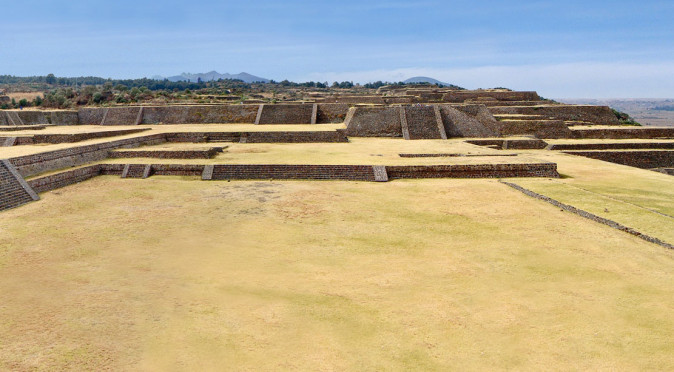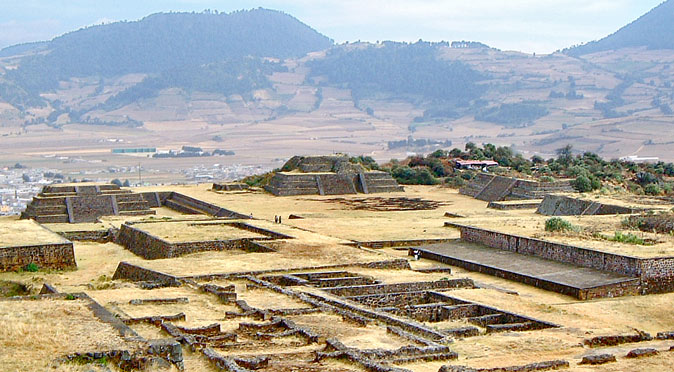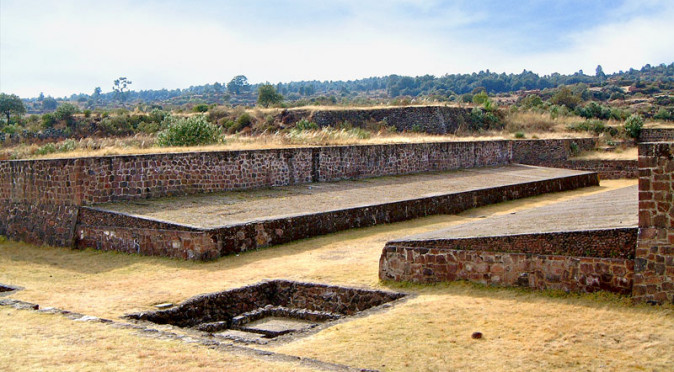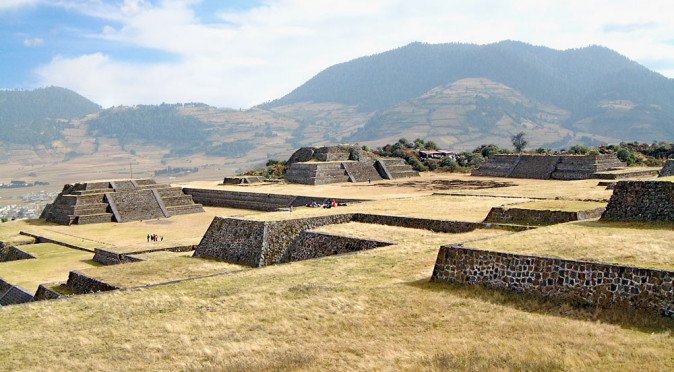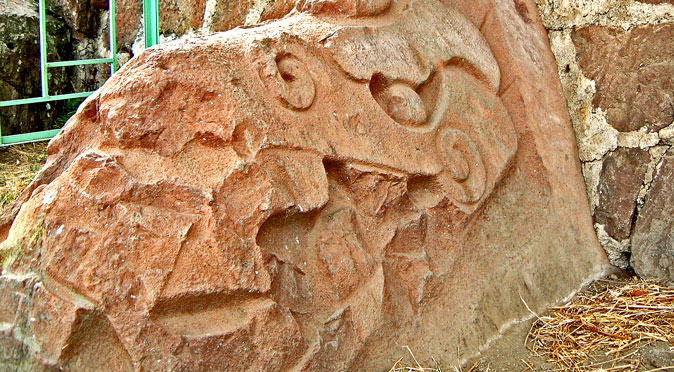The entrance to the ceremonial complex at Teotenango is through the Plaza Del Jaguar, which features a carving of a jaguar on the wall from which the plaza takes its name. The carving is believed to be contemporaneous with the construction of the huge platform on which it is carved, which forms the base of Group A and the primary terrace for entire complex. The carving must therefore predate the constructions of Group A, which are known to have been completed in Stage 3, between 900AD and 1162AD, and it could have been carved during Stage 2, which began in 750AD, when work was first undertaken at the hilltop site.
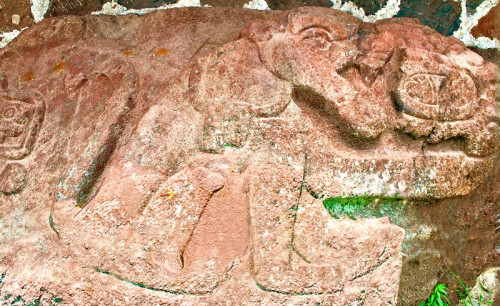
W0019TO: Jaguar Carving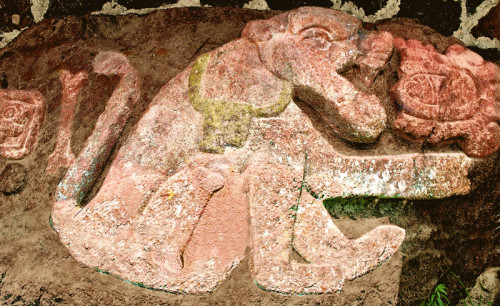
W0019TOH: Highlighted Jaguar
The carving features a jaguar that is seated in an unusually humanesque way with remarkably large feet (see figs. W0019TO & W0019TOH). The jaguar holds out a paw as if to receive something and above the outstretched paw is a circular motif. The eroded motif features an oval-shape that is bordered by frills, which look like petals, but could also be ventricles or spurting blood. A section close to the mouth appears to be missing, which gives the appearance of the jaguar having taken a bite from it. The jaguar wears a squared pendant around its neck and has a long bone shown on its thigh, which is presumably the femur. Curiously, the long bone appears again behind the jaguar, between it and the date glyph which reads “2-Rabbit”.
W0020TO: Two-Rabbit Glyph from Jaguar Carving
W0020TOH: Two Rabbit Glyph
W0021TO: Nine-House Glyph
There are two date-glyphs found in the vicinity; the first is “2-Rabbit” which appears on the same carved block as the jaguar; then a second date is found on an adjacent block which reads “9-House”. The bearing of the glyphs, or indeed the dates they describe, is not known. But it is certain that at least the “2-Rabbit” glyph is central to the information being supplied by the jaguar carving.
Whilst the meaning of these carvings is uncertain, it is possible to come to a probable conclusion. The carvings sit prominently, high upon the wall next to the main stairway into the complex. They were designed to be seen by people who were entering the city and are therefore likely to be descriptive of the city’s name, its purpose, or its occupants – possibly all three. In Mesoamerica, time was observed and recorded as astronomical alignments which then allowed them to predict the future. A universal example would be that when they observed the winter solstice, they knew the days would grow longer again and soon crops could be planted. By recording almost every notable event as an astronomical alignment, including floods, droughts, wars, the births and deaths of great rulers and civilisations, the people of Mesoamerica built up a list of important celestial events from which they could predict a recurrence – whether it be predicting a flood, a war, a death or the end of an epoch, it allowed them to prepare. A date is therefore often part of a greater story, which simultaneously records the astronomical observation and a notable event. The clues to what these were are encoded into the symbolism which we can’t read – the bone, the pendent, the seated position, the large feet, the outstretched paw, the object in the paw and detail within that object – these are all potentially descriptive of the event, both celestial and terrestrial – as the two were one and the same. As an example, a possible reading is:
In the year 2-Rabbit, the bone (e.g a celestial body) entered the jaguar-leg (e.g. a portion of a large jaguar constellation) and the jaguar-lord (e.g. the ruler of this city, or another which is denoted by the pendant) feasted on hearts (i.e. defeated a peoples described by imagery within the heart). This event was recorded on 9-House with the erection of this city you are now entering.
This is by no means a translation of the carving, that remains unknown, but it is an example of how such carvings were read.

